You must be logged in to rate content!
9 minute(s) of a 548 minute read
12-15-2012
Hi Roger
One for my "modern" car friends assures me that with todays turbocharged engines that on some hi-performance cars exhaust pipes can "grow" up to 4 inches (100 mm) in length.
It sounds remarkable but he claims to have the graphs and data to prove it.
It really does seem that with 4.5 : 1 comp ratio and fuel little better than kerosene that in 1923 this was not such a problem. Only time will tell.
One thing I do know is that with the tuned length "extractors" on the Lagonda Rapier that the wall thickness of the pipes has become appreciably thiner over 30 years
Moving right along, I must confess that I have made one concession to modernity! I have fitted a modern throw away fuel filter. Originally there was no means to filter the fuel. As the car has been standing around for so long and despite my best efforts there is a fair chance that there will still be a certain number of foreign bodies in the petrol tank, I believe that it is a wise precaution to install a filter. While I was under the car with my camera I could not resist a couple more photographs. The first shows a general view of the underside of the car, very much as I believe it would have looked in 1923, The next shot is of the brake rods and return springs. these are all the ones originally fitted. Finally the battery box, as the exhaust runs reasonably close to the box I have taken the extra precaution of fitting a heat shield along that side. Before someone complains about the lack of a split pin in the shackle bolt in the rear spring hanger. The bolt screws into the hanger and the nut is simply a lock nut. as a precaution I have used self locking "crown" nuts.
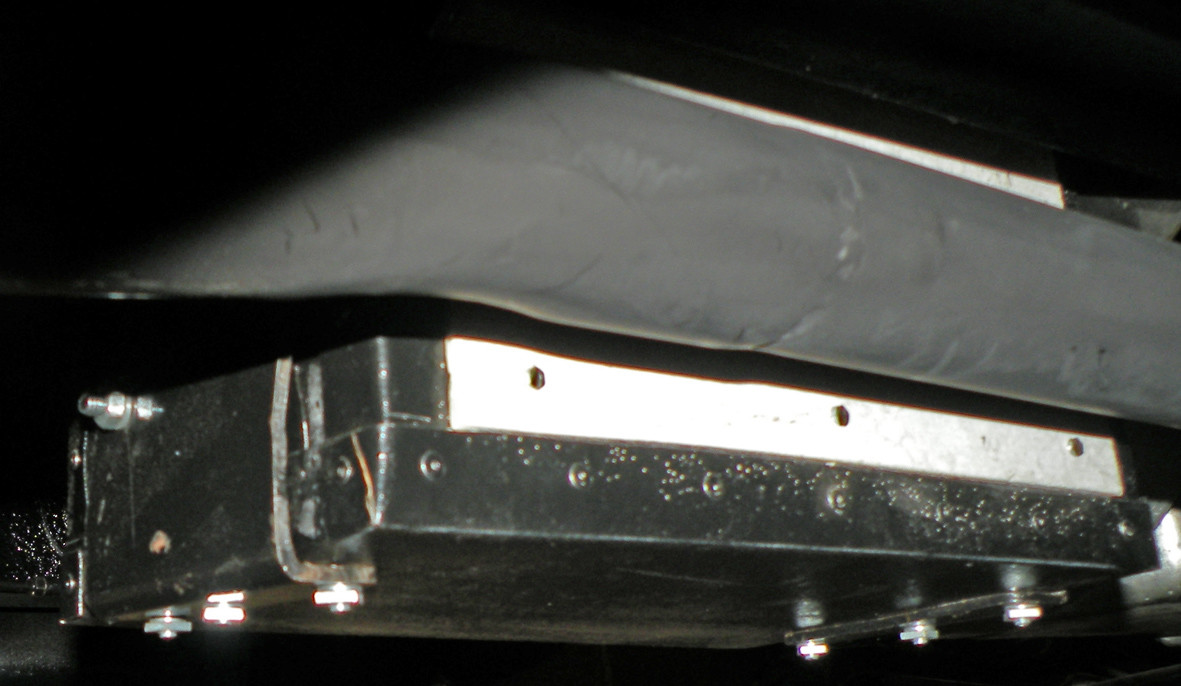
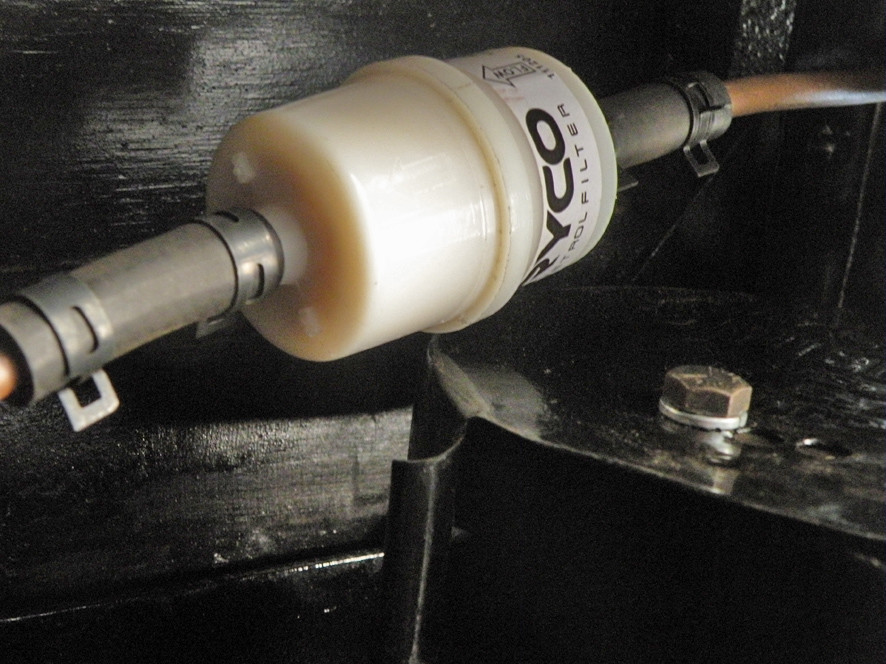
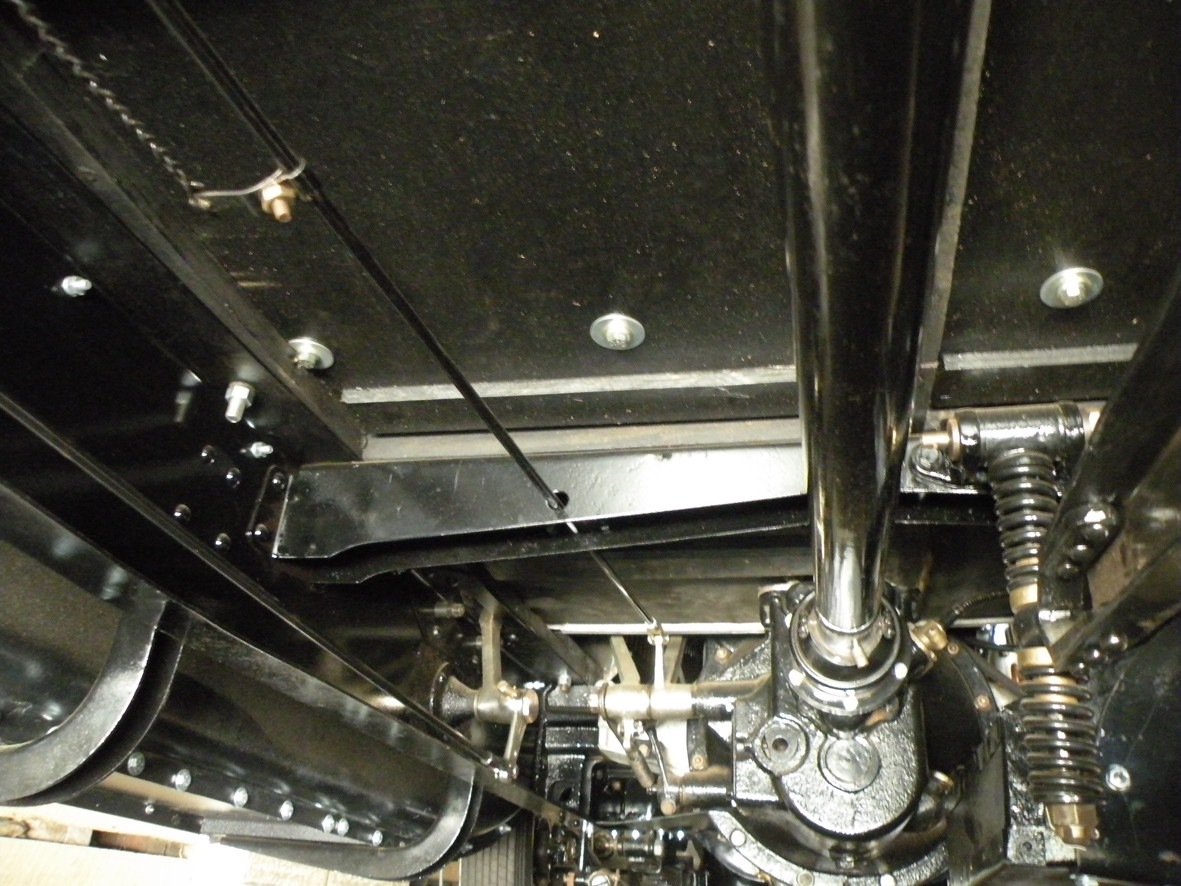
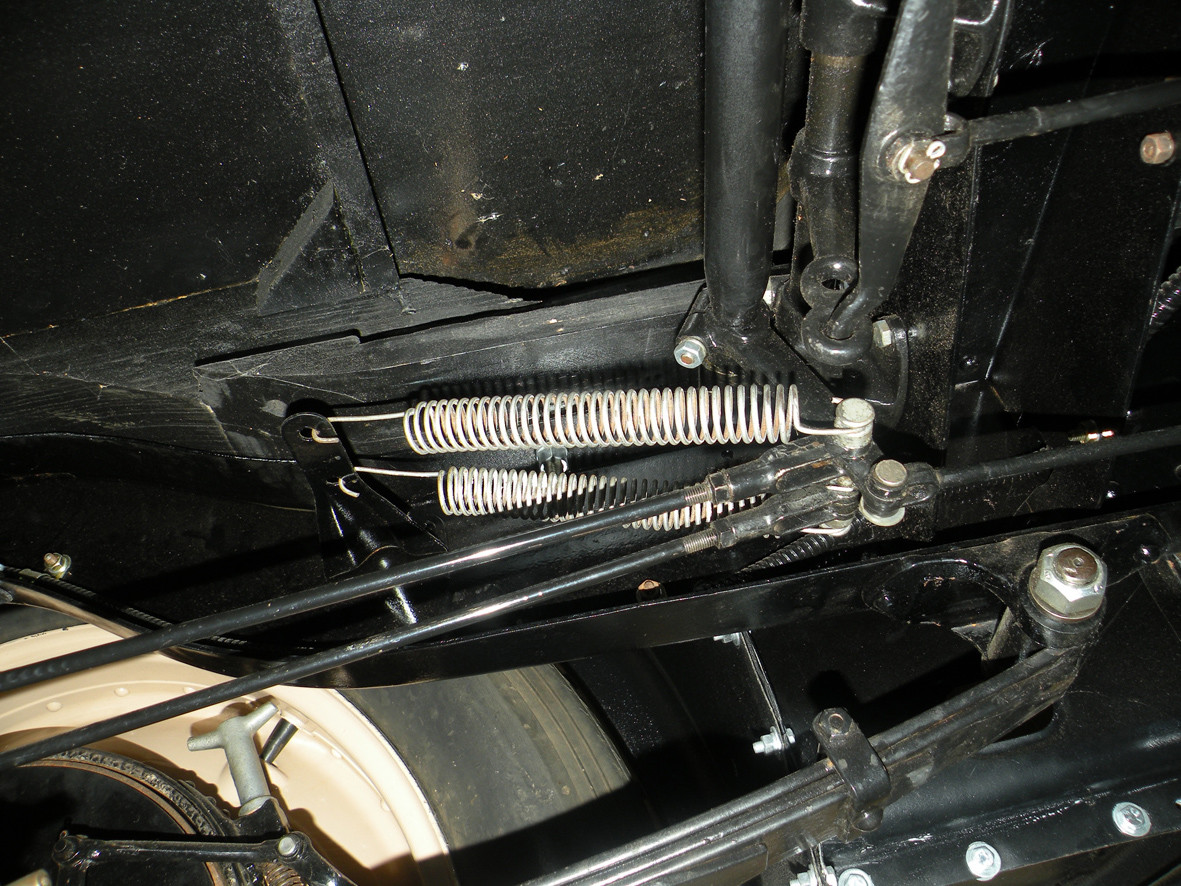
12-20-2012
We are back again having taken a couple of days off catching up with son Nic and his young family. They had driven over from Adelaide, South Australia to meet up with us, approximately half way, in Western Victoria. An enjoyable pre-Christmas chance to recharge the batteries. On our return journey we avoided the main Western Highway and drove on some great country roads barely seeing another car. While It may have taken an hour or two longer it was well worth the effort. Since returning late yesterday I have collected a small batch of plating and have managed to install the interior door pull handles. These had the chrome stripped off and replaced with nickel. For the 600+ km journey the VW Jetta used just a fraction over 5 litres of diesel per 100kms at a steady 100-110 kph.
12-21-2012
Hello Donald
If you go to the Packard Info photo archive and look at the photographs of"when new" cars of the early 1920s you will see that cowl lights were not introduced until later about 1925-6. Auxiliary lights were built into the main head lamps as a second globe.
I have spent hours researching details of the cars on this valuable resource. There is no where else with anything like the number of cars photographed in most cases when new or just months old. http://packardinfo.com/xoops/html/modules/myalbum/viewcat.php?cid=26
Having collected the proper black rubber case battery yesterday I have made one more step closer to completing the car only to take one step backwards after discovering a small leak in a soldered joint in the vacuum tank so it has had to come off postponing the long awaited "start up' one or two more days. At least I now know that the starter motor is working and the engine is turning OK. Patience is a virtue or so I am reliably informed. To the best of my knowledge there is just the one (two man) company still hand building batteries as there were in the 1920s & 30s here in Victoria Australia.
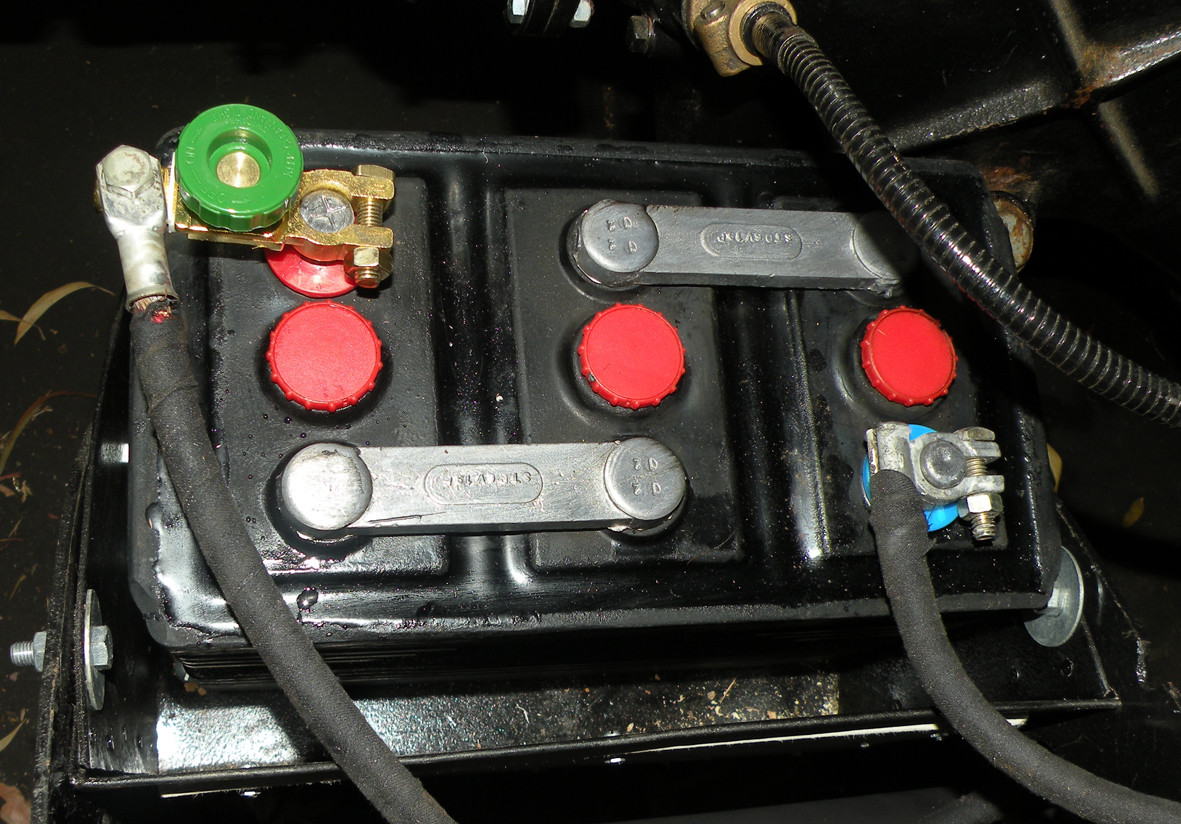
Hello Donald
Good to hear from you again. I hope that life in Pittsford is good for you. That is quite some move from Kentucky. I will have to go back through my files to find the contact in Hong Kong who sent me the horn button/replacement pot lid knobs. Perhaps you could look at some of your local cook ware suppliers for a suitable knob. I am not sure who had the switch plate but once again I will see if I can find something for you. Is that sunshade an internal or external? Below you will see that I have obtained a pair of reproduction tail lamps locally.
Meanwhile Simon the sign-writer has returned the spare wheel cover and the small plate for the front of the car. I am especially pleased as he had some trouble finding a suitable paint for the writing on the fabric cover. In the end he used Tee-shirt paint. Now there should be no doubt as to what the car is. Rather than white on black for the front plate he has continued on with the biscuit on dark brown colour scheme. Rather understated, exactly how I think it should be, discreet and not too "in your face".
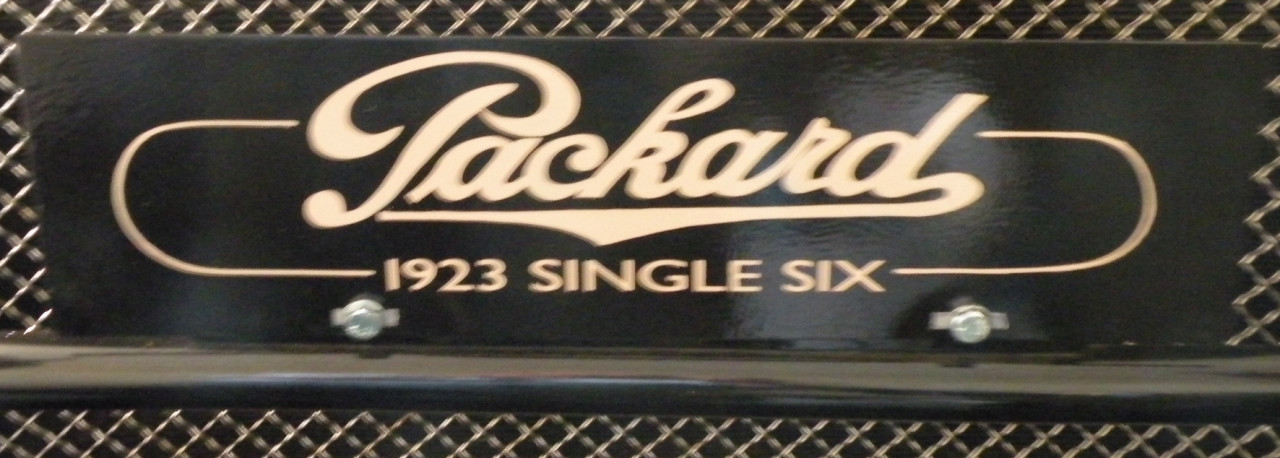
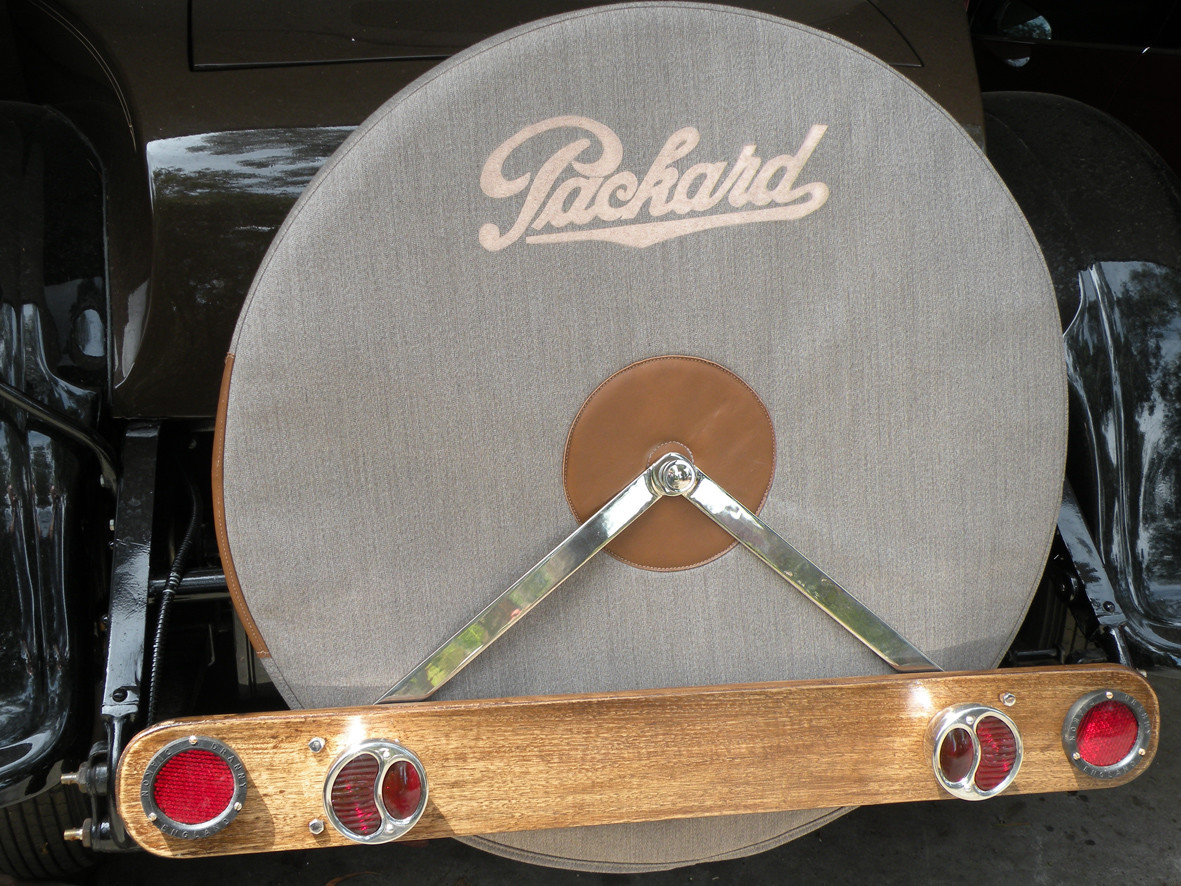
12-22-2012
Hello Donald
The Dixie Flyer now lives in the main office block of Kentucky Trailer, previously Kentucky Wagon Co now run by the second family to control the concern in 150+years. We were able to take photographs (organised by West Peterson) on the original factory floor where it would have been assembled.
The old factory had been sold to the Louisville University and was due to be demolished only weeks later.
Those wanting to know more or to see some of West's photograph shoot can visit http://forums.aaca.org/f190/dixie-flyer-firefly-speedster-photographs-252653.html There was a series of articles in Antique Automobile during 2009/10.
"Keep on keeping on"
BJ
I will send you an e-mail as time is pressing.
Hello again Donald.
I found my Diamond H interior light switch still attached to the timber frame of my car unfortunately they are one of those things that seem to be thrown away with the rest of the trim when early cars are scrapped. I will ask a couple of people here who tend to have collections on "bits".
I assume you are looking for one like mine. (see photograph)
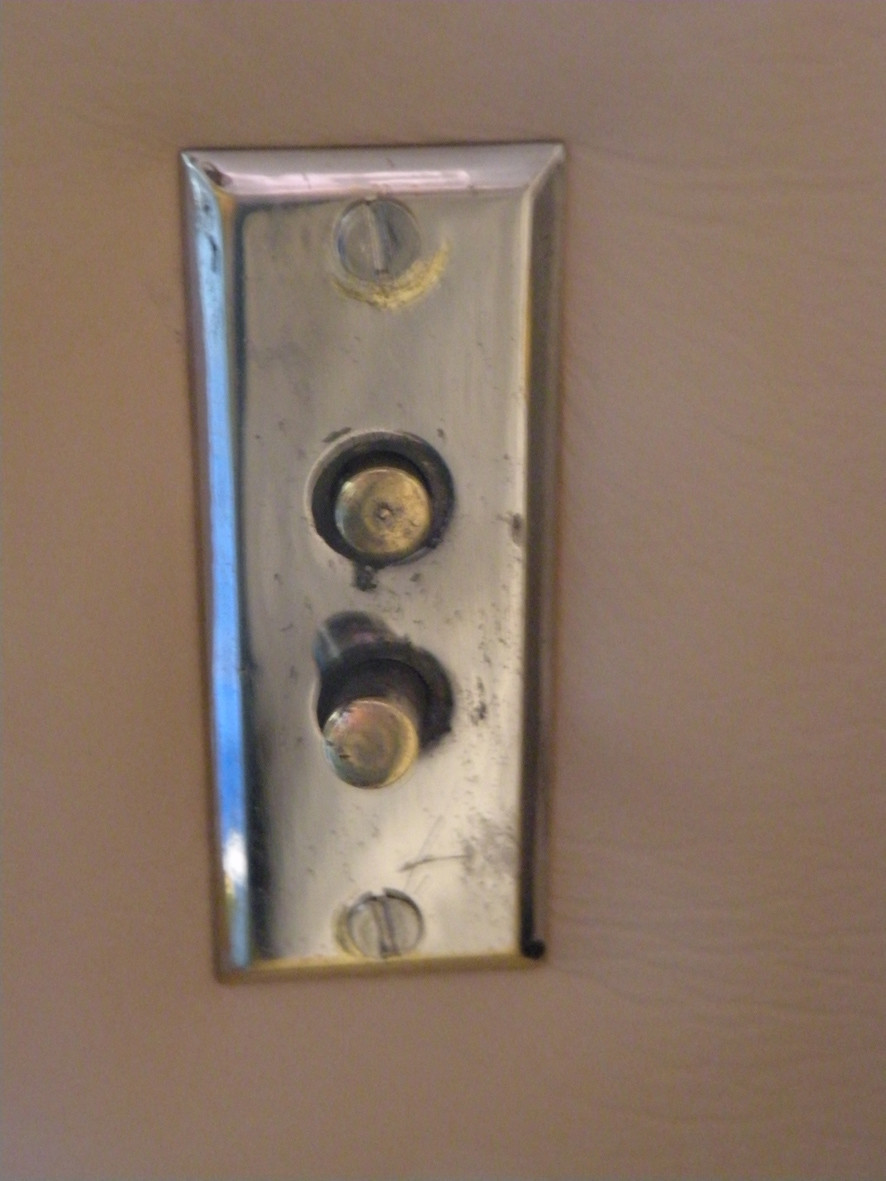
Hello yet again
It is too hot to be working outside at a projected 39 degrees C,
Attached are a couple of new photographs and two second attempts that may be marginally better than the last. Thanks to David McC's excellent Drawing Service I have now constructed a crank handle using the handle section out of the junk box and a short piece of heavy gauge tube from the off cuts. I am pleased to report that it work a treat and has been invaluable in checking the ignition timing. One step closer to "start-up".
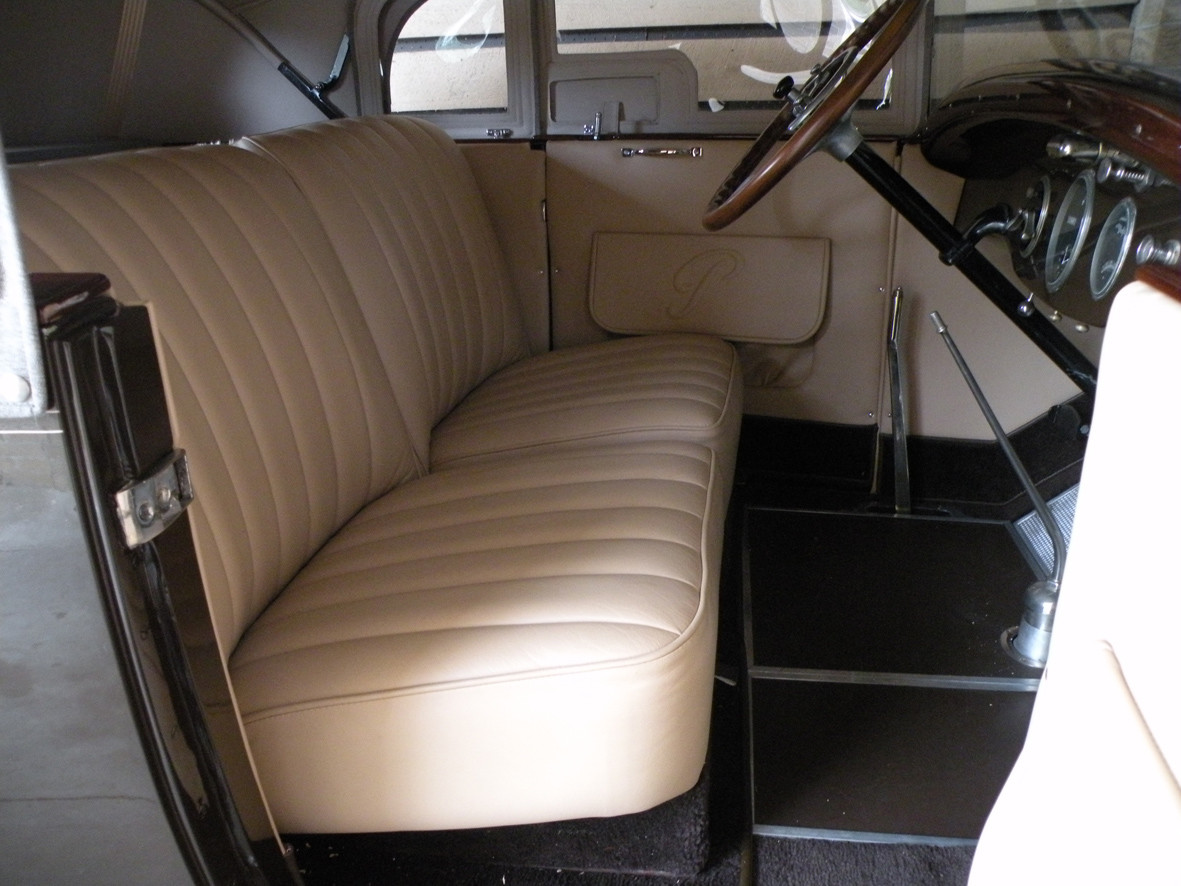
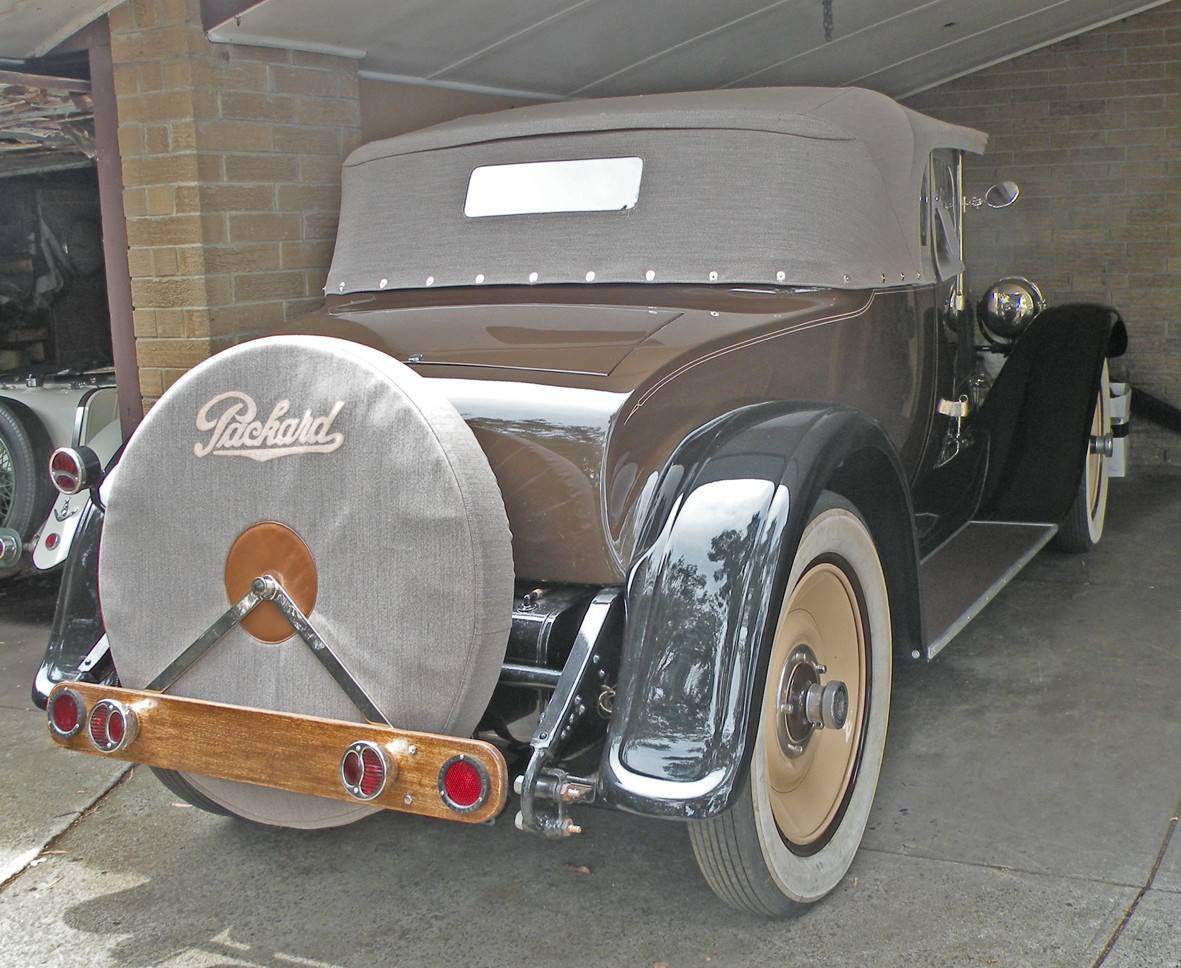
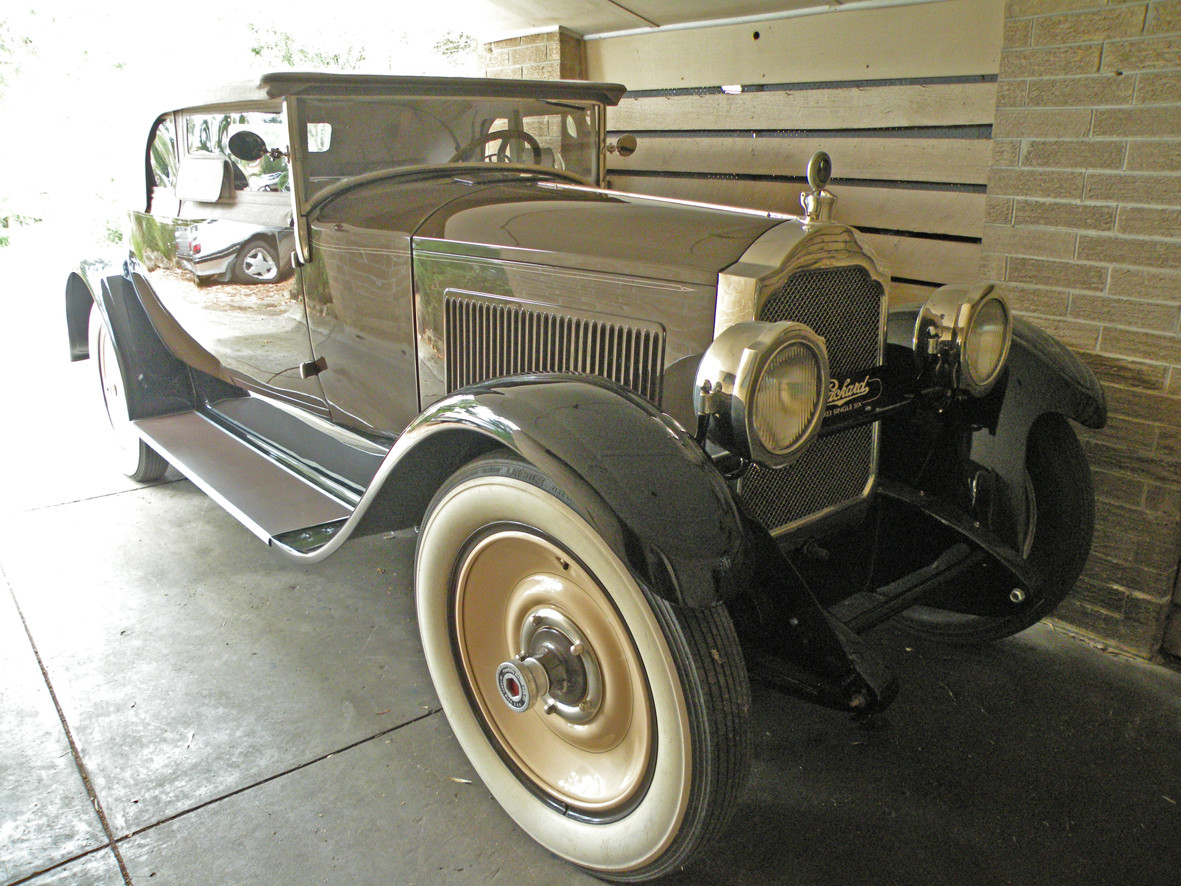
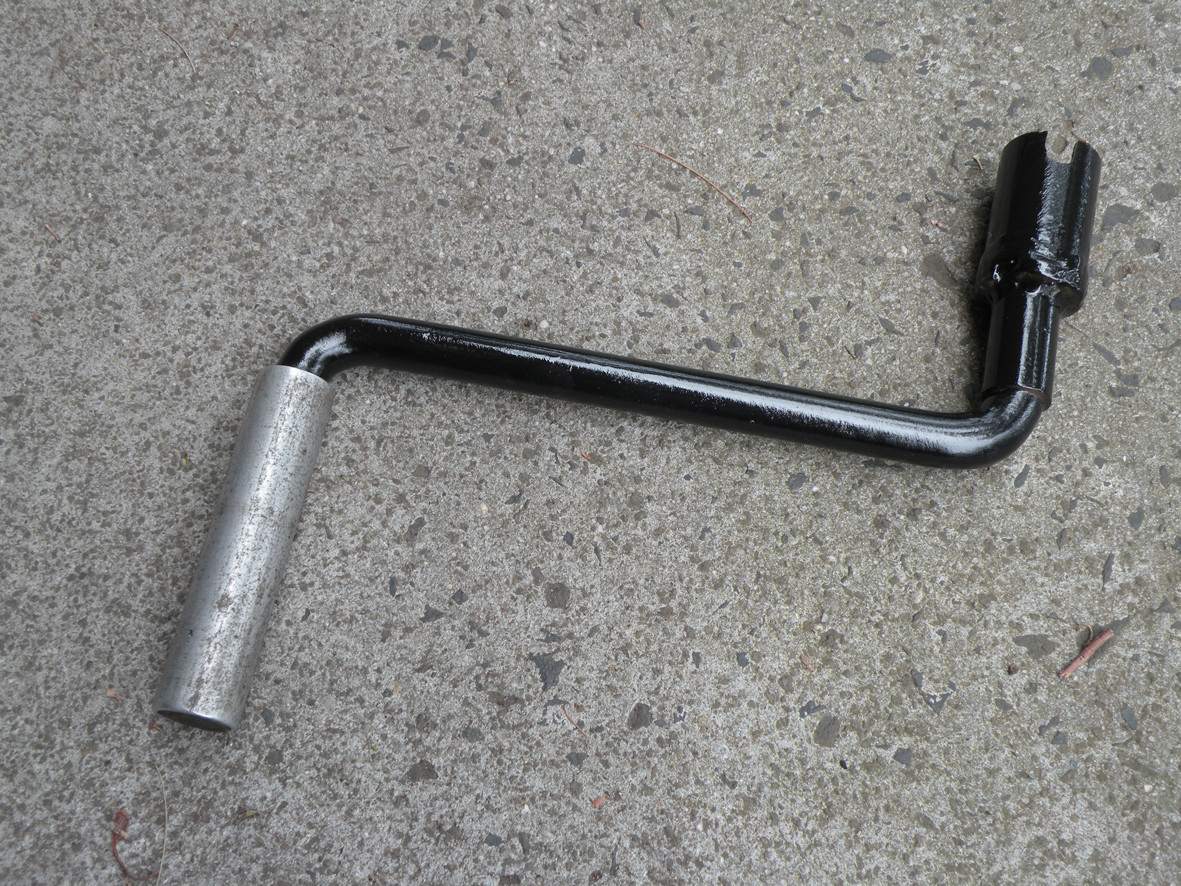
12-25-2012
Thank you Ben & David
So far I have only used the crank to bring the motor around to TDC on number one cylinder to check the ignition timing and to set the points gap. When the time comes, probably early in the New Year, I hope it will start on the starter motor. The procedure you recommend sounds fairly much like my standard start up drill for a vintage engine. Even with the Lagonda if it has been standing for any time likes the carbs partially flooded to start from cold. Once it has started and is warmed up it is"on the button"as I anticipate the Packard will be. I learnt a long time ago about trying to start an engine with the spark advanced. A lesson once learnt never forgotten!
Unfortunately our social calendar is a little crowded for the next few days to allow very much Packard time and I need to check out the circuit breaker on the back of the main switch before I go too far. I suspect that it has a malfunction or possibly a large spider/beetle inside it, there are no openings big enough to permit a mouse access.
With Melbourne Australia some 18 hours ahead of New York time we have just finished breakfast on Boxing Day while you are about to start your recovery from over eating your Christmas Turkey or what ever you had too much of. Helen's home made traditional Plum Pudding is always the highlight of our Festive Lunch. With just four of us this year we barely managed to make a small dint in it even after second helpings all around.
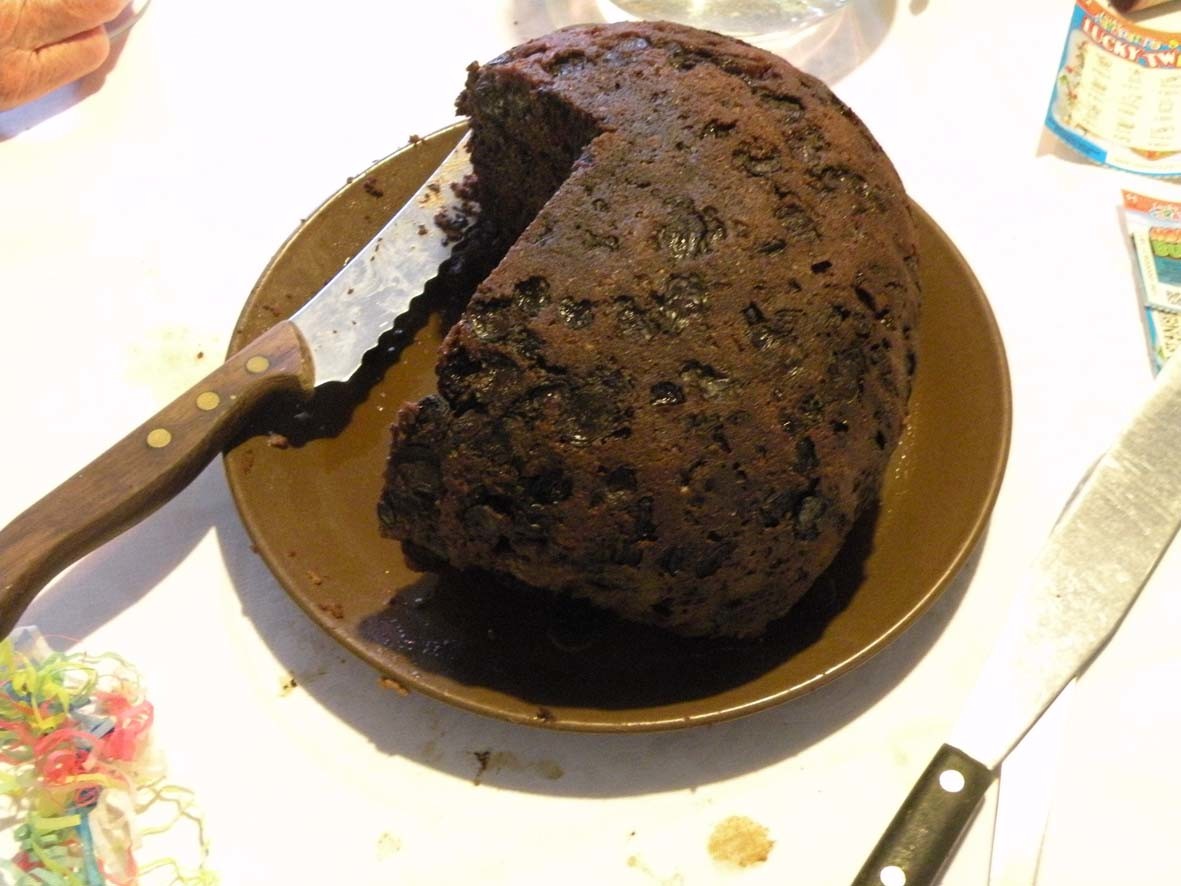

bravo!
Posted by CCmyVW on 1/26/20 @ 5:30:36 PM